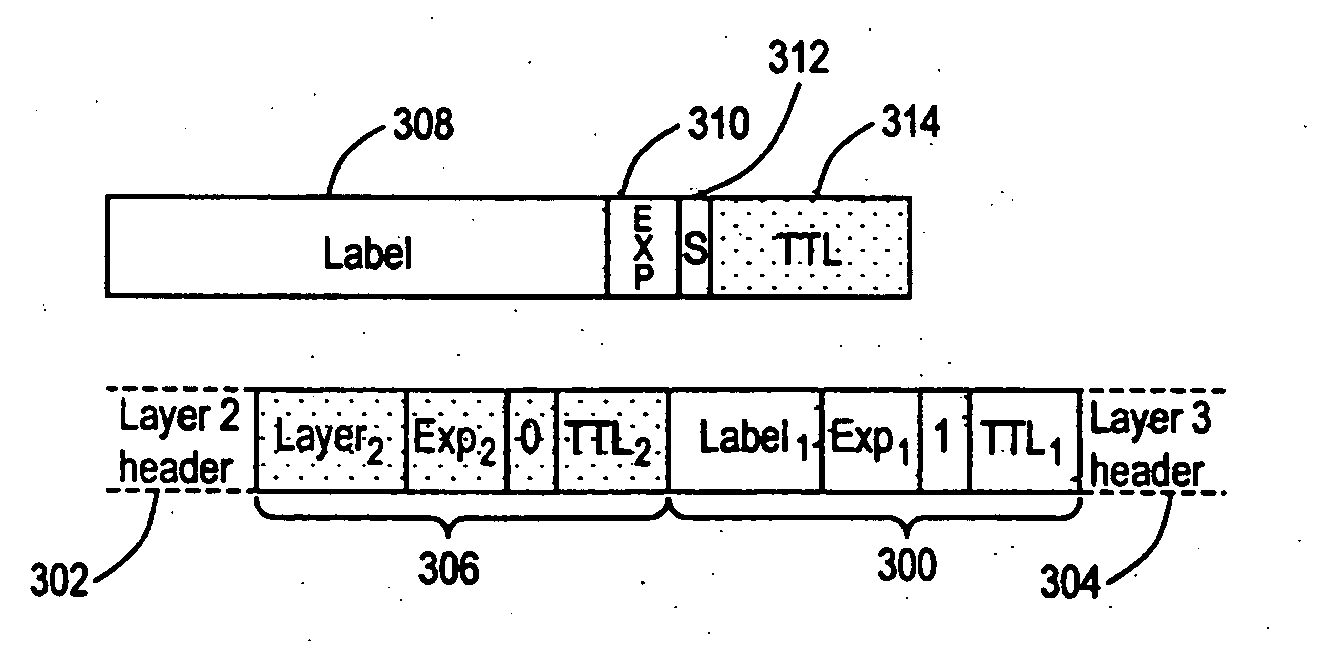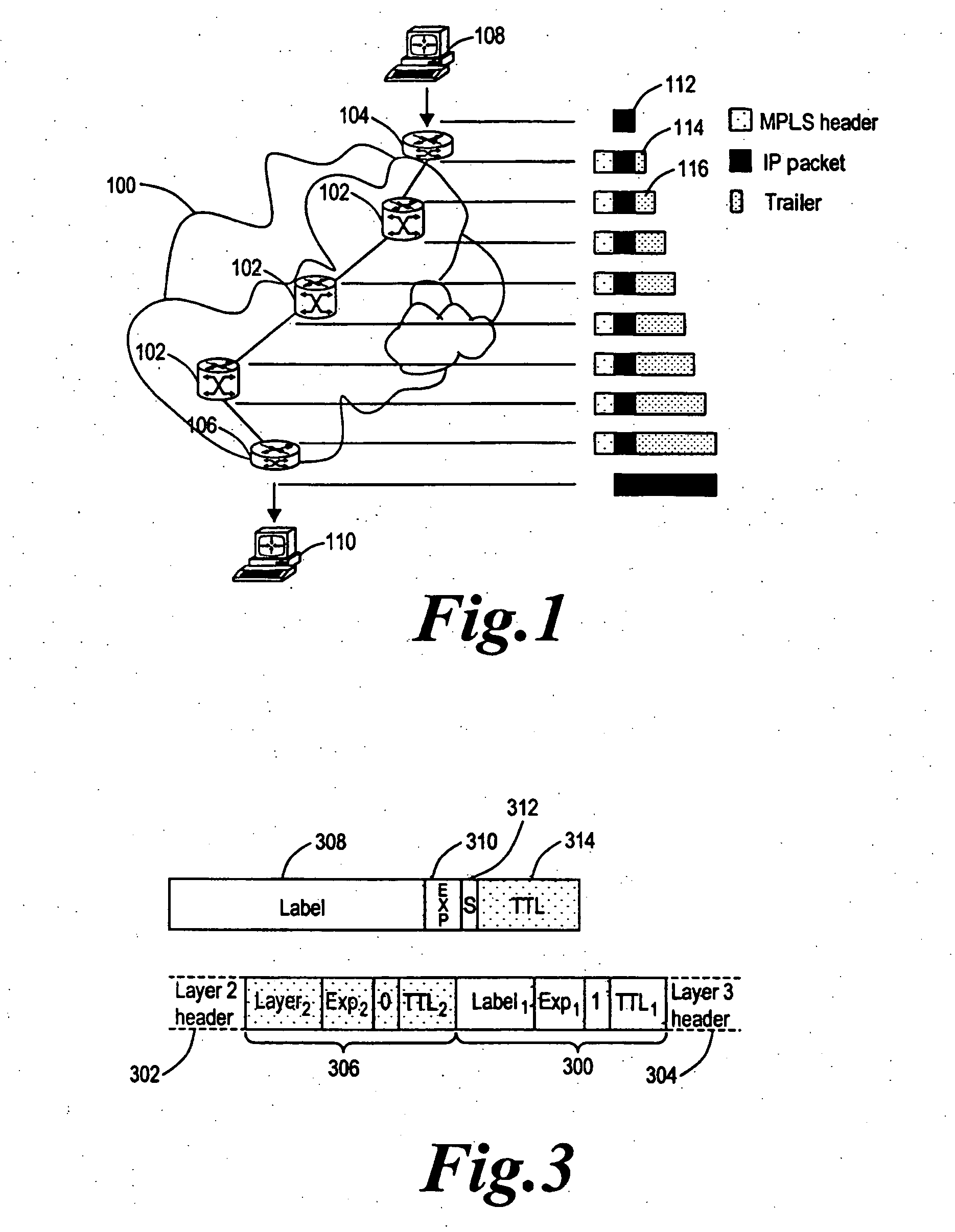Method of generating a monitoring datagram
a datagram and data technology, applied in the field of packetswitched communications, can solve the problems of inability to determine the loss rate in mid-flow, complex packet loss measurement, and care to ensure that the reordered packets are not confused with lost packets, so as to achieve the effect of improving accuracy
- Summary
- Abstract
- Description
- Claims
- Application Information
AI Technical Summary
Benefits of technology
Problems solved by technology
Method used
Image
Examples
Embodiment Construction
[0048] Throughout the following description identical reference numerals will be used to identify like parts.
[0049] Referring to FIG. 1, a communications network, for example the Internet (not shown), can comprise a number of smaller networks, such as a Multi-Protocol Label Switching (MPLS) network 100 capable of supporting, for example a Virtual Private Network (VPN) with which a service level agreement is associated specifying acceptable datagram, or packet, loss rates.
[0050] The MPLS network 100 supports Label Switched Path (LSP) routing and the network 100 comprises a plurality of routers 102 to route packets between an ingress router 104 and an egress router 106. The ingress router 104 is capable of communicating with an ingress terminal 108, for example a first, suitably programmed, Personal Computer (PC), and the egress router 106 is capable of communicating with an egress terminal 110, for example a second, suitably programmed PC.
[0051] Referring to FIG. 2, each router 20...
PUM
 Login to View More
Login to View More Abstract
Description
Claims
Application Information
 Login to View More
Login to View More - R&D
- Intellectual Property
- Life Sciences
- Materials
- Tech Scout
- Unparalleled Data Quality
- Higher Quality Content
- 60% Fewer Hallucinations
Browse by: Latest US Patents, China's latest patents, Technical Efficacy Thesaurus, Application Domain, Technology Topic, Popular Technical Reports.
© 2025 PatSnap. All rights reserved.Legal|Privacy policy|Modern Slavery Act Transparency Statement|Sitemap|About US| Contact US: help@patsnap.com



